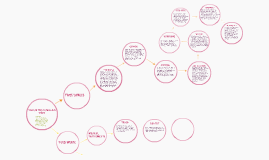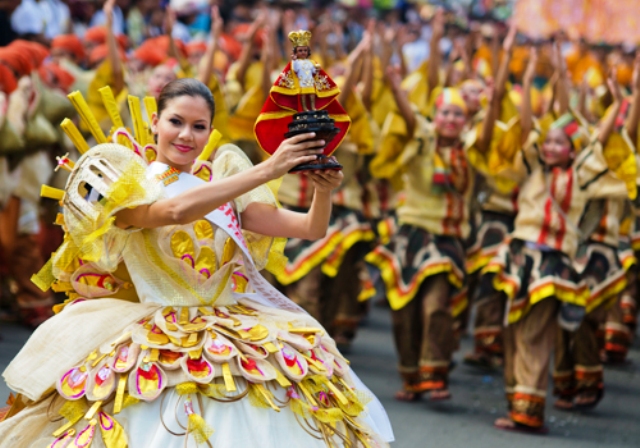- Visayan Ethnic Dance Youtube
- Visayas Ethnic Dance
- Visayan Ethnic Dance Videos
- Visayan Ethnic Dance Music
Dugso
Balitaw is a song-and-dance debate between a man and a woman. More often sung than danced, it is a Visayan art form which existed in the region long before the Spaniards came. The early natives called the song oyayi and the dance baya-i. The Spaniards called the dance valse (waltz). “The balitao is a love debate in song and dance by a mart and a woman.”1 It is more sung than danced. The balitao is a truly representative Visayan song as the kumintang and the kundiman are representatively Tagalog. In it are embodied faith, joy, and all sorts of human activities as well as the varied hopes and odds of Visayan life. Philippine Folk Dance LAGUNDI FOLK DANCE KUMAKARET FOLK DANCE FOLK DANCE Folk dance in the Philippines are the visualization of the grace and beauty of the country lasses going through the intricacies of a courtship dance with their barrio swains. Folk dancing is an effective.
The dance must have originated from Bukidnon, northeastern Mindanao since they are performed as an entertainment for the deities in fiestas organized for them.It was originally thought that this dance was performed only during harvest time or upon the birth of a male heir. Women would wear colorful feathered head dresses, plaid costumes and anklets. They would step rhythmically around a bamboo arch decorated with newly-gathered palay (rice stalks) and corn, and their movements are emphasized by the tinkling sounds from the anklets.
Itik-itik
The dance originated from Surigao del Norte, Mindanao, Philippines.
According to the story, a young woman named Kanang (short for Cayetana) was the best dancer in that province. At one baptismal celebration, she introduced new steps which were improvisations of the dance Sibay. She imitated the movements of the ducks or itik. Because of its unusual steps and fascinating interpretation, the audience began imitating her.

Sagayan
FOLK DANCE FROM MINDANAO-PHILIPPINE FOLK DANCE
Visayan Ethnic Dance Youtube
SAGAYAN is a Philippine war dance performed by both the Maguindanao and Maranao depicting in dramatic fashion the steps their hero, Prince Bantugan, took upon wearing his armaments, the war he fought in and his subsequent victory afterwards. Performers, depicting fierce warriors would carry shield with shell noisemakers in one hand and double-bladed sword in the other attempting rolling movements to defend their master.
Singkil
Singkil (or Sayao sa Kasingkil) is a famous Philippine dance of the Maguindanao people, but was popularized by the nearby Maranao peoples of Lake Lanao and later the Bayanihan Philippine National Folk Dance Company.

Also known as the Princess Dance or the Royal Maranao Fan Dance, the dance is based on the Maranao interpretation of the ancient Indian epic, the Ramayana: the Darangen. The Singkil narrates a scene in which Sita (Putri Gandingan) escapes her abductor, the demon king Ravana and is lost in the forests of Alangka, thereupon being found by her husband, Prince Rama. Interesting to note is that in the original Ramayana epic, Rama selects Hanuman, the Hindu monkey-god, to find Sita on his behalf; the fact that in the Singkil it is Rama (Rajah Bantugan) who finds her suggests a modification of the original Hindu narration in order to agree with monotheistic Islamic ideology.
Kasingkil refers to the art of moving one’s feet in and out of two clicking bamboo poles in imitation of Putri Gandingan who gracefully avoided the falling trees brought about by an earthquake.
Performers would therefore gracefully step in and out of bamboo poles, arranged in crisscross fashion while manipulating either fans or simply their bare hands.Played at celebrations and festivals, traditionally the dance was performed by a girl of royal blood intend on advertising herself to would-be-suitors for her future marriage.
The dance is said to have been named after either the leg bracelets or anklets of silver, nickel or brass with chiming bells of the same name or the act of voluntarily or accidentally entangling on one’s feet in either vines or tall grass.
Visayas Ethnic Dance
KARASAGUYON
.jpg/1200px-Women_in_traditional_Manobo_dress_(Kaamulan_Festival_2017%2C_Bukidnon%2C_Philippines).jpg)
The dance is classified under Tribal dance. it originated from Lake Sebu, South Cotabato. “Karasaguyon” of the T’boli portrays a polygamous male in the process of picking his next wife from among four sisters vying for his attention. The jingling of beads and brass bells around their waists and ankles provide musical accompaniment.
ASIK
(ah-SIHK)
A solo slave dance performed by the umbrella-bearing attendant to win the favor of her sultan master. Asik usually precedes a performance of Singkil.
UDOL
(ooh-DOHL)
This dance is classified under Tribal dances. It originated from the Tagakaulo tribe
of southern Davao.This is a ceremonial dance which portrays death and revenge. It opens with three women walking in with votive candles, mourning the loss of a relative. They are followed by men playing the udol, a long wooden musical instrument. The woman make eloquent gestures of tenderness and despair such as wielding a spear and pounding the udol in anger, countering the steady rhythms of the musicians. A male priest then dances, begging the spirits to guide the soul of the deceased. Finally, two warriors enter, spears in hand, performing a frenzied dance in a circle, then disappearing off stage “to the woods,” apparently to secure the heads of their enemies.
MAGLANGKA
This dance which originated from Jolo, Sulu is classified under Muslim Dance. Literally meaning “to dance,” the maglangka is used to mold the adolescent girls into ladies of good breeding and accomplished dancing skills. The girls are strictly taught to gracefully execute movements imitating birds in flight, fish swimming in the sea, or branches swaying in the air while remaining in the confines of a square cloth. these movements require intense concentration and innate style as the ladies express emotions and entertain guests.
PANGALAY
(pahng-AH-lahy)
This dance is classified under Muslim/Moro dance. It is a popular festival dance in Sulu, during wedding celebrations among the affluent families. They may last for several days or even weeks depending on the financial status and agreement of both families. Dancers perform this dance to the music of the kulintangan, gabbang, and agongs during the wedding feast.

The Bisaya, also known by the Spanish name Cebuano, are the biggest ethnic group in the Philippines. Without the help of legislation, their language is the lingua franca of half the country, being spoken in the Visayas and Mindanao.
| Language: | Bisaya |
| Ancestral Domain: | Central Visayas Region |
| Principal City: | Cebu |
| Native God: | Kaptan and Magwayen |
| Religious Ritual: | Sinulog |
Ancestral territory of the Bisaya, covering the Central Visayas Region |
Preeminence
Cebu, the Bisaya's beloved city, was the country's first capital. The Bisaya vied with the Tagalog to make Bisaya the national language, and resisted implementation of the Filipino language upon losing the battle. Until now, there's this unique and almost separate culture running in Central Visayas, and the Cebuano allude to their province as the Republic of Cebu.

Effervescence
The Bisaya is a race that is dominant without being brutal. If the Tagalog does it by intricate diplomacy, the Bisaya are these lively, very effervescent folk who'd win you over with their humor and laughter. They dance their progress out of the Visayas, and sing their horses on to Mindanao. On an evening filled with fireflies they'd drink wine with you on a rickety table, and next thing you know they're all over your land.
The Heaven and the Abyss are the Bisaya’s supreme gods |
Gods
Kaptan, the Heaven, is the supreme god of the Bisaya. Magwayen, the Abyss, is the supreme goddess. In Visayan mythology, the Heaven and the Abyss are coequal. In the beginning there were only the heaven and the abyss; whereas in the Christian story a god in man’s image and likeness came in to create the earth, no such thing happened in Visayan mythology. The heaven and the abyss themselves were alive. They accidentally created the Philippines when, quarrelling with each other, the Heaven hurled islands over the face of Abyss.
Prominent Member
The first Filipino hero, Lapu-lapu, is a Bisaya. He was the first to resist Spanish colonization. Ferdinand Magellan, the first man to have circumnavigated the world and discovered the Philippines, fell in Lapu-lapu’s hands as the latter’s army fended off an attack from the newly arrived Spanish force.
Dances
Visayan Ethnic Dance Videos
Sinulog is the Bisaya’s sacred dance. It is originally a fertility dance, and is still performed as such by indigenous Visayan peoples in the uplands of Panay Island.
The native alphabet of the Bisaya (image by Akopito Ardinez) |
Alphabet
Visayan Ethnic Dance Music
The Bisaya have their own style of Baybayin, the native alphabet of the Philippines. The script in the image to the left reads “Akoopitoo.”




